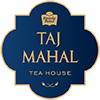Champagne of Teas
- December 10 2020
- 0 Comment(s)
Tea connoisseurs worldwide label Darjeeling tea as “Champagne of Tea” due to its unique aromatic flavour found nowhere else in the world. In fact, because it is in so high demand in USA, Europe and Japan, the Indian Government has provided a Geographical Identification (GI) tag to Darjeeling Tea to safeguard against duplication. Darjeeling Tea was the first Indian product to be given this identification tag. For your information, other well-known GI tags awarded subsequently to Indian products are Basmati Rice, Kolhapuri Chappals & Bikaner savouries to name a few.
These teas are grown at high elevation estates (up to 6000 ft) facing the mighty Himalayan Range. The combination of the rich fertile soil of the elevated estates and fresh, crisp mountain air perform their magic on the tea bushes to produce the famed and unique Darjeeling flavour.
In a previous article, we talked about the Darjeeling Autumn Wonder Tea that is produced in October & November - just before the winter sets in. During the chilly winter months from December to February, the Darjeeling Tea bushes become dormant and do not produce any tea. In this period, the bushes go into a “deep sleep” and finally wake up around March when the Spring, sunshine and intermittent showers rejuvenate the tea bushes and encourage them to grow new shoots or tea leaves. This first harvest of the season is called “First Flush”. The word “Flush” means harvest. In North India, due to seasonality and winter dormancy of tea bushes, first flush is existent in other tea growing regions such as Assam and Dooars, Terai (West Bengal)
At Taj Mahal Tea House, we are delighted to talk about our unique Single Estate First Flush Darjeeling Tea. This tea is a black orthodox (Long, wiry, twisted) style manufactured tea and organically and sustainably produced from one of the finest high elevation tea estates in the world.
The leaf structure has a slight greenish colour & artistically wiry & well rolled in shape to preserve the aromatic flavours.
The liquors are light, clear, fresh, bright and lively with a pleasantly mild astringency to the palate. This Astringency is a typical characteristic of Darjeeling First Flush Tea. The Tea bushes that are laden with all “Tea-ness” stocked up during the dormant winter months, literally, eject these “goodies” into the new shoots resulting in an astringent or bitter taste. In addition, Producers sometimes tend to oxidise the tea less to preserve the natural “Freshness” and, therefore, highlight its most natural floral flavour.
Interestingly, Darjeeling First Flush Tea was not always made this way. Till 1980s, Darjeeling Tea producers used to manufacture “fully oxidized” Black First Flush Darjeeling Tea to cater to its largest market-Soviet Union, that preferred “standard black tea”.

When the Soviet Union collapsed in 1980s, exports to USSR stopped and Darjeeling producers needed to desperately seek out new buyers. Fortunately, some German tea buyers intervened & influenced the producers to “tweak the manufacture” & oxidise tea leaves less in order to accentuate more of the fresh, floral notes of Springtime which the Germans actually preferred. This suggestion paid off handsomely, and as a result, a major portion of the yearly earnings for the Darjeeling estates now come from Europe for First Flush harvest.
To savour these exquisite flavours, we recommend that you brew this tea in only hot fresh water and not boiling water. Brewing may be for 1 to 3 minutes in a closed vessel. The longer your brew, the higher will be the resultant astringency. So, brew according to your taste preference.
To make this a meditative and personal experience, we suggest you brew in a transparent tea pot to see the play of leaves in hot water and watch the gradual change in colour of the water during infusion.
After pouring out the tea, please inhale the floral aroma from the wet infused leaves. Gently sip the tea and get intoxicated by the complex flavours that will transport you to calmer & tranquil mental states. Playing some soothing Vasant Ragas during this period may truly heighten your experience into an unforgettable one.
We do not suggest that you add any milk sugar or lemon to this tea as you may eclipse the delicate floral & fresh flavours this tea possesses.

You may pair this tea with light sweets, cakes, tarts, biscuits, light sandwiches and fresh berries or fruits.
BUY OUR Darjeeling 1st flush tea




